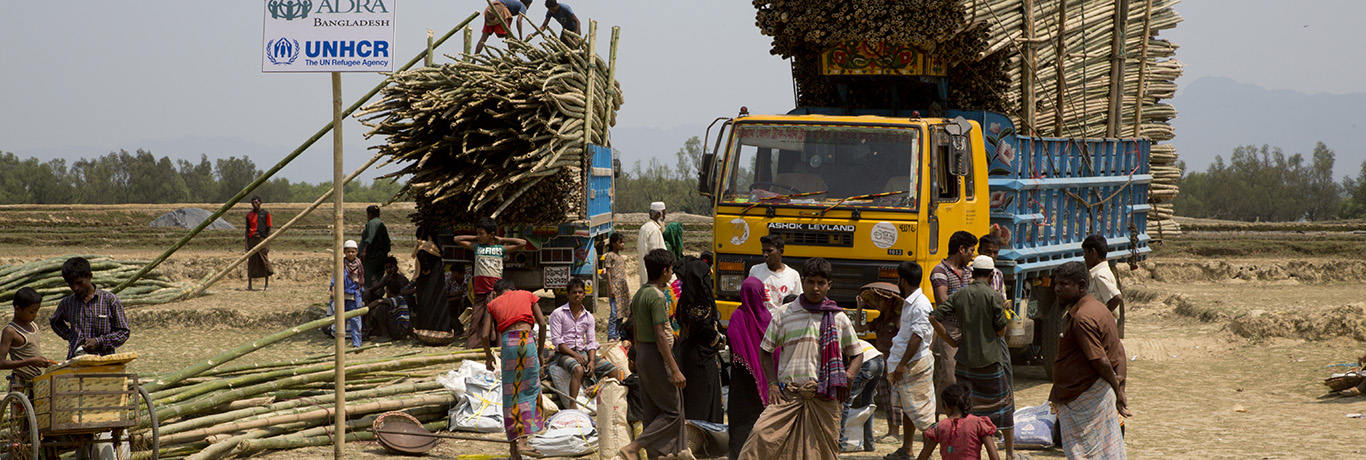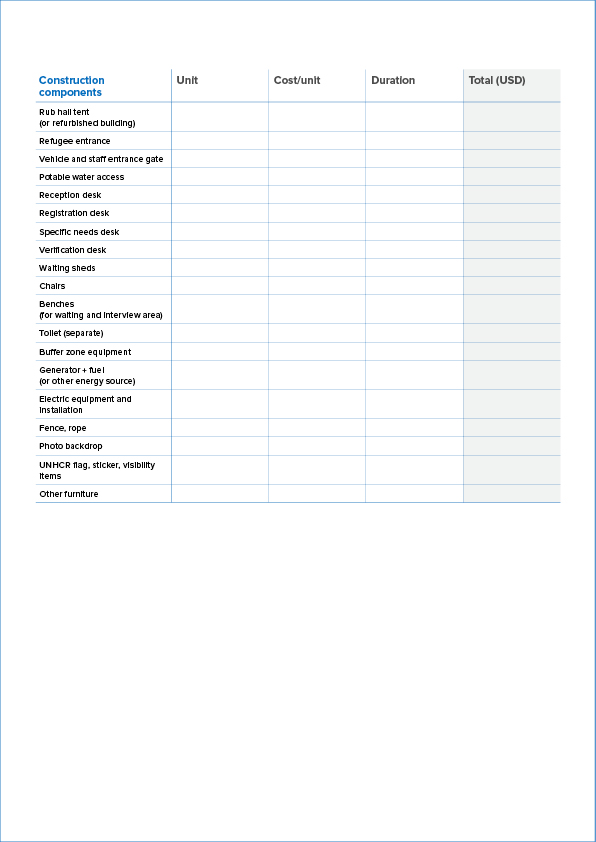It is important to consult documents that have been developed for the registration activity to help determine exact requirements for the registration activity – the process flow map and SOPs are particularly useful tools for visualizing material and equipment needs. A strong SOP indicates at each step in the process flow the material resources required to successfully carry out the related activity. Other key documents and information sources in this regard include:
- The scaled registration layout: an accurate map will help determine:
- the required size for the registration site(s),
- the amount of furniture (desks, chairs) required for all steps in the registration process as well as the waiting areas,
- IT requirements (computers, printers, electricity, connectivity),
- The stationary and other equipment required at each step to carry out the related activity.
- The number of sites and locations: an assessment of all the sites to be used will inform whether and to what extent investment is required by UNHCR to construct or re-purpose a structure for registration. Looking at the scale and timeline of a registration activity in terms of sites and locations will also inform both an estimation of the volume of each item required as well as its likely deterioration through wear-and-tear over time.
- Staffing levels: when staffing levels are decided, this will directly inform the number of laptops needed as well as stationary and other tools to be assigned to each staff member, as well as the number of printers and other shared equipment required.
- Nature of accommodation and transportation arrangements for staff: are staff staying in hotels? In tents with mattresses? What infrastructure, if any, is required to house registration staff? How many vehicles are required to transport staff and equipment to the registration site?
The below is list of items commonly required for large registration activities. It includes staffing costs as well.





